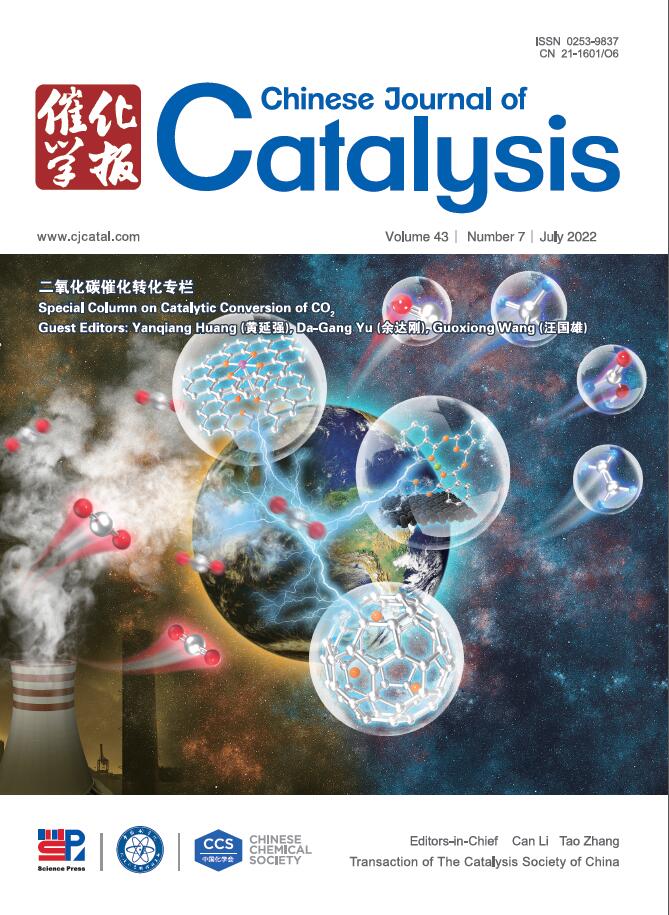Peptide bridging for cofactor channeling in fusion enzyme lowers cofactor input by two orders of magnitude
IF 15.7
1区 化学
Q1 CHEMISTRY, APPLIED
引用次数: 0
Abstract
Biocatalysis with nicotinamide adenine dinucleotide phosphate (NADP)-dependent oxidoreductases faces a challenge in improving the efficiency of the costly cofactor utilization. Although enzyme fusion can offer cofactor regeneration, the high-volume input and limited cofactor recyclability still make the enzymatic processes unsustainable. Therefore, it is of great significance to reduce cofactor input in a fusion enzyme (FuE) system, but no successful practice has been reported. Herein, we design a decapeptide bridge, RRRQRRRARR (R10), with high affinity for NADPH to construct fusion oxidoreductases (phenylacetone monooxygenase and phosphite dehydrogenase) for ester synthesis and NADP recycling. The peptide bridge enables electrostatic cofactor channeling that transports NADPH/NADP+ across the peptide between the enzymes’ NADP-binding pockets, so the fusion enzyme (FuE-R10) presents 2.1-folds and 2.0-folds higher conversions than mixed free enzymes and a flexible linker (GGGGSGGGGS)-fused enzyme, respectively, at NADPH/FuE of 0.1. The fusion enzyme, FuE-R5, bridged by a half-shortened linker, is proved more effective in facilitating cofactor channeling; compared to the mixed free enzymes, FuE-R5 exhibits two orders of magnitude reduction of NADPH input in ester synthesis. The work has thus demonstrated the potential of the cofactor bridging strategy in the development of sustainable cofactor-dependent cascade biocatalysis.
融合酶中辅因子通道的肽桥接降低了两个数量级的辅因子输入
烟酰胺腺嘌呤二核苷酸磷酸(NADP)依赖的氧化还原酶生物催化在提高昂贵的辅助因子利用效率方面面临着挑战。虽然酶融合可以提供辅助因子再生,但大量的输入和有限的辅助因子可回收性仍然使酶的过程不可持续。因此,在融合酶(FuE)体系中减少辅因子的输入具有重要意义,但目前尚无成功的实践报道。本文设计了一个对NADPH具有高亲和力的十肽桥rrrqrrrrarr (R10),构建融合氧化还原酶(苯丙酮单加氧酶和亚磷酸酯脱氢酶)用于酯合成和NADP循环。肽桥可以实现静电辅因子通道,在酶的NADP结合口袋之间的肽上运输NADPH/NADP+,因此融合酶(FuE- r10)在NADPH/FuE为0.1时,转化率分别比混合自由酶和柔性连接体(GGGGSGGGGS)融合酶高2.1倍和2.0倍。融合酶FuE-R5由半缩短的连接物桥接,被证明在促进辅因子通道方面更有效;与混合自由酶相比,FuE-R5在酯合成中NADPH输入减少了两个数量级。因此,这项工作证明了辅因子桥接策略在可持续的辅因子依赖级联生物催化发展中的潜力。
本文章由计算机程序翻译,如有差异,请以英文原文为准。
求助全文
约1分钟内获得全文
求助全文
来源期刊

Chinese Journal of Catalysis
工程技术-工程:化工
CiteScore
25.80
自引率
10.30%
发文量
235
审稿时长
1.2 months
期刊介绍:
The journal covers a broad scope, encompassing new trends in catalysis for applications in energy production, environmental protection, and the preparation of materials, petroleum chemicals, and fine chemicals. It explores the scientific foundation for preparing and activating catalysts of commercial interest, emphasizing representative models.The focus includes spectroscopic methods for structural characterization, especially in situ techniques, as well as new theoretical methods with practical impact in catalysis and catalytic reactions.The journal delves into the relationship between homogeneous and heterogeneous catalysis and includes theoretical studies on the structure and reactivity of catalysts.Additionally, contributions on photocatalysis, biocatalysis, surface science, and catalysis-related chemical kinetics are welcomed.
 求助内容:
求助内容: 应助结果提醒方式:
应助结果提醒方式:


